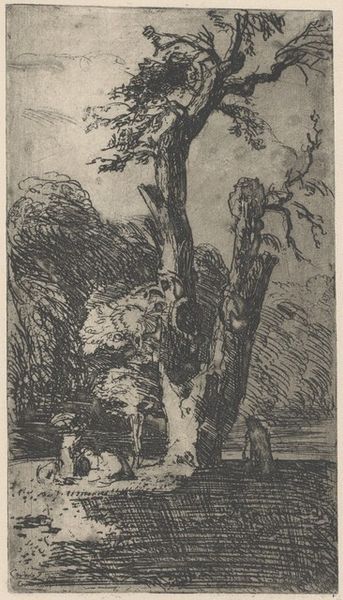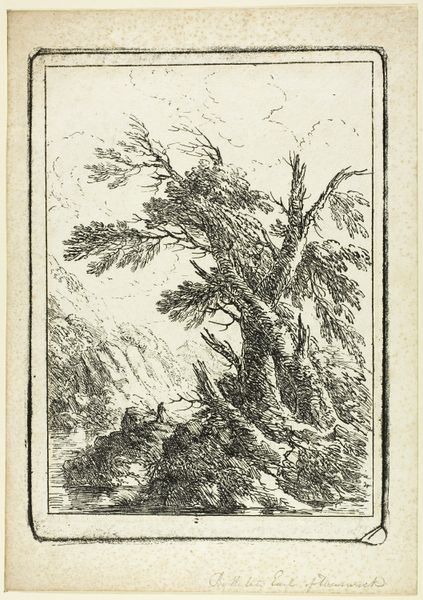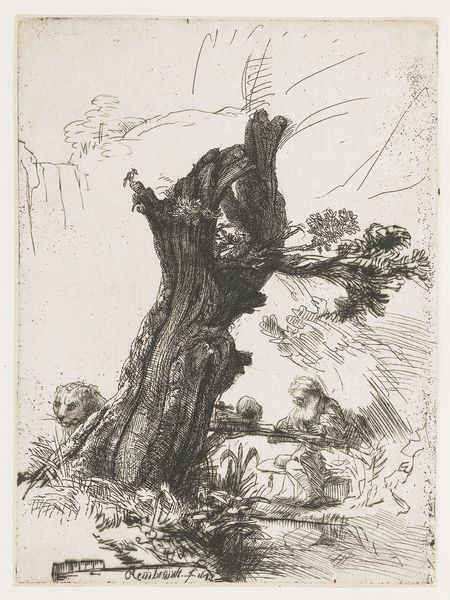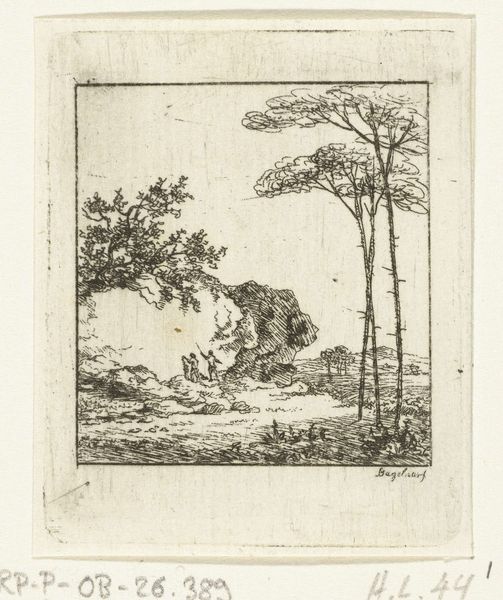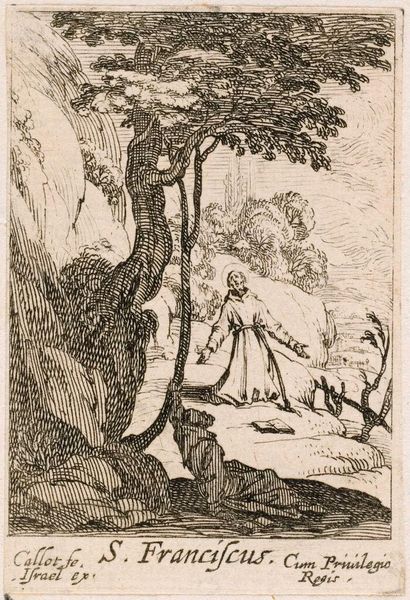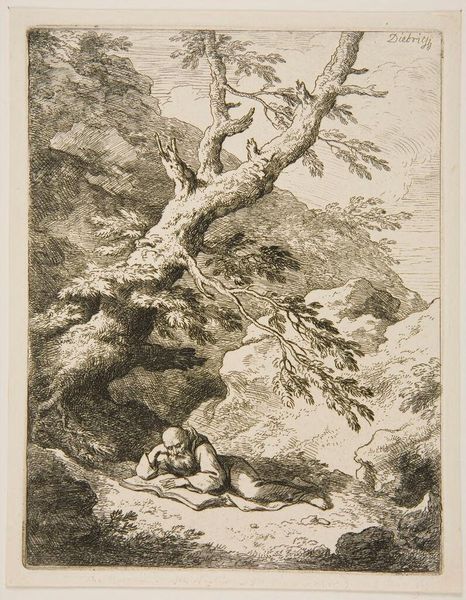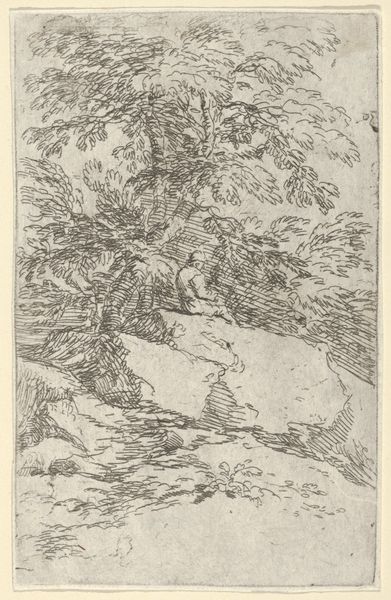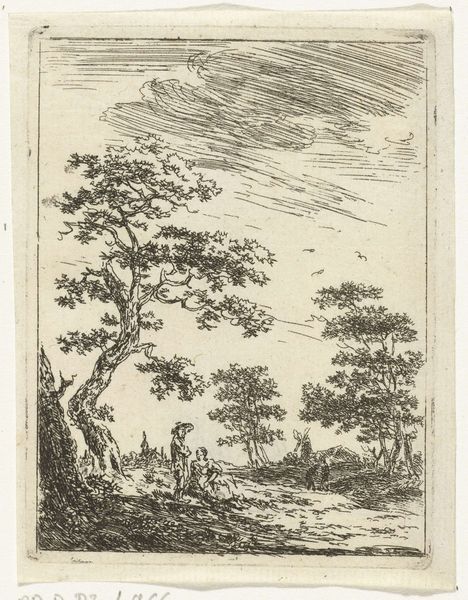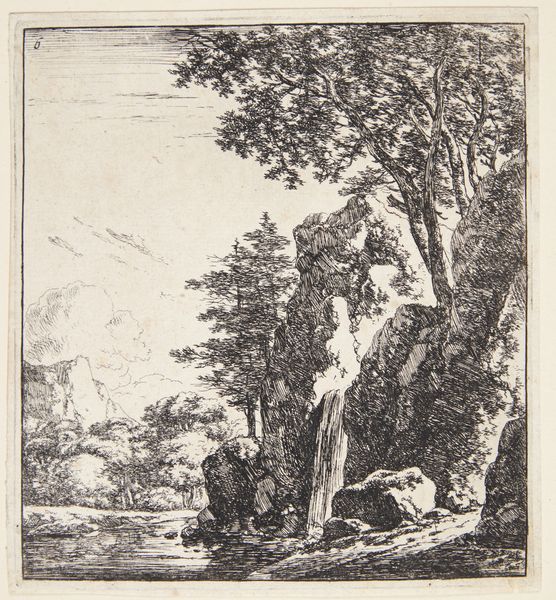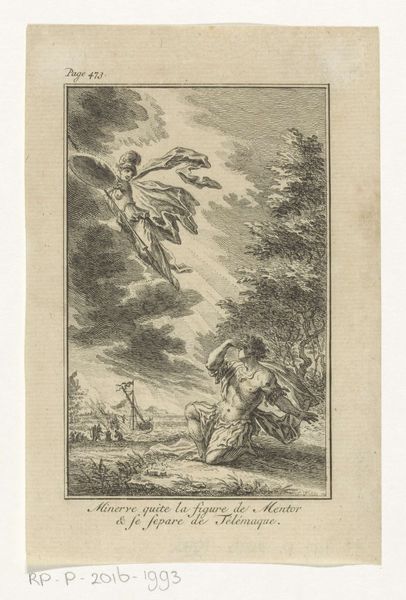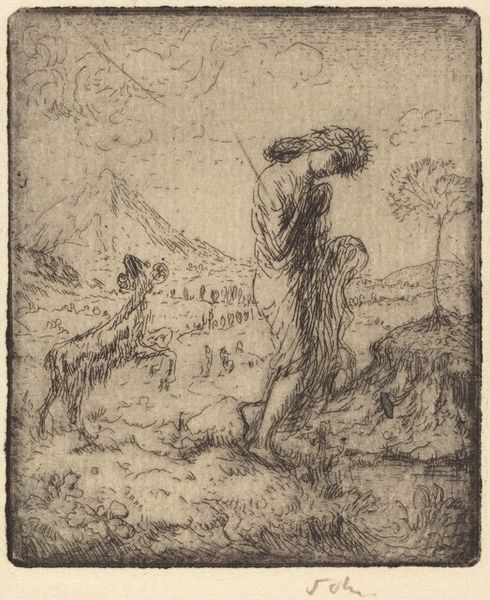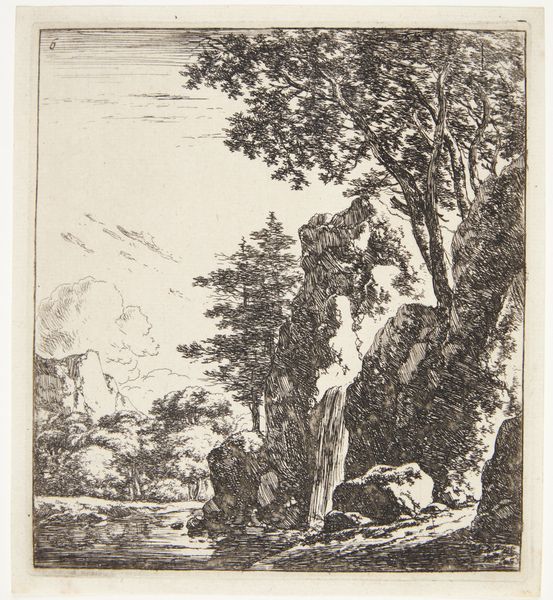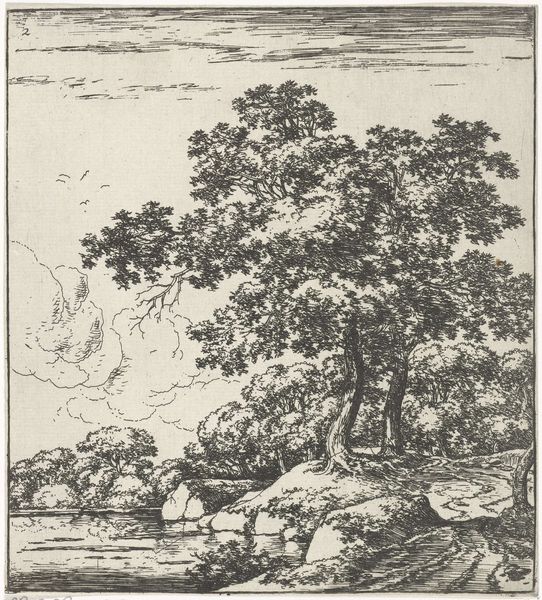
print, etching
# print
#
etching
#
landscape
#
genre-painting
#
realism
Dimensions: plate: 22.86 × 17.62 cm (9 × 6 15/16 in.) sheet: 31.12 × 17.62 cm (12 1/4 × 6 15/16 in.)
Copyright: National Gallery of Art: CC0 1.0
Curator: Oh, this has such a poignant feel to it. Editor: It does. This is "Resting Along the Way," an etching created in 1943 by Eugene Higgins. The image shows a woman and child taking shelter under a gnarled tree in a desolate landscape. Curator: The scale feels intimate, yet the landscape looming. The lines in the sky and the shadows... they make me think of journeys, of burdens carried. There’s a loneliness here, but also a quiet resilience in how closely the mother and child huddle together. Editor: Higgins often depicted scenes of working-class life and hardship. His work resonates with social commentary on poverty and resilience, mirroring the historical context of economic struggles in the early to mid-20th century. Did his background in Paris shape that perspective, you think? The city became such a place for depicting a modern class experience... Curator: Maybe! You can sense he wants to find a deep, grounded poetry in their experiences. It's in the details—the worn clothes, the slump of the woman’s shoulders... there’s a quiet dignity there. It avoids being maudlin. Instead, I feel invited to witness a shared human moment. Editor: Right, and etching as a medium allows for such detail. Consider the context, too. Printmaking in that era served to democratize art. Reproducible works allowed social messages to be spread to larger audiences. Think about how politically charged works could be at this point! Curator: It certainly amplifies the narrative in the piece. But to look at it now... it's simply moving to find that sort of timeless connection to humanity still present. Like those huddled figures are echoes through time, reminding us we are not so different. Editor: Precisely. Art serves as that empathetic bridge across different eras and circumstances. A mirror and a window at the same time, to reflect on our shared conditions. Curator: A melancholic and beautiful window at that. Editor: Agreed. A truly reflective work.
Comments
No comments
Be the first to comment and join the conversation on the ultimate creative platform.
